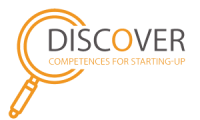Planning, organisation and management skills
1. SMART goal setting
Any planning process starts out with defining the goal.
SMART stands for
- Specific
- Measurable
- Action-oriented
- Realistic
- Time-bound
Formulating your goal according to the SMART method provides an excellent starting point for any further planning.
2. Prioritizing
The ability to prioritize—and at times reprioritize—tasks and activities is vital to optimizing time constraints and limited resources and thus is key to good planning. Prioritizing creates order, reduces stress levels, and provides guidance for your project.
Having a designated method to organize your tasks in your planning will help you with prioritizing. For example, you can use the Alpine Technique:
- List all the tasks you have to do.
- Add to the list of tasks what has been prepared but not yet completed.
- Group up tasks similar to each other. Check the deadlines for each task.
- Specify time reserves.
- Define a hierarchy of tasks.
- Think about where you can get the help of colleagues or other departments.
- Remember to include planning time in your planning.
- Control the implementation of your plan.
Prioritizing your tasks is vitally important for effective management. Therefore, always decide how important and how urgent a task is before scheduling it. This way you can avoid running out of time for things that may be more important. Below, you will find an exercise using the Eisenhower Matrix to help you prioritize.
3. Action Plan
Developing an action plan is at the core of any planning and organisation process and will provide a detailed plan for your project’s implementation. It helps to create and maintain order, to organize your work within time and budget constraints, and to schedule your own short-, mid-, and long-term work processes.
The detailed documentation of your action plan provides a road map for you and your employees to follow while completing daily tasks. In addition, good documentation is a way to make employees accountable for completing tasks correctly.
Finally, the action plan helps you to analyse your work procedures which is vital to finding more-efficient ways to get work done, such as by identifying and eliminating redundant processes and bottlenecks.
The following worksheet provides you with strategies to come up with a working action plan.
